Airport Profile
Timeline:
60 years of Moscow's Sheremetyevo International Airport
Moscow's Sheremetyevo International Airport (SVO) celebrated its 60th anniversary on 11 August this year. Originally built as a military airbase, SVO witnessed its first commercial flight in 1959 and has grown to become Russia’s busiest airport. Varsha Saraogi looks back at the history of this iconic airport and its most significant milestones.
With a history going back sixty years, Moscow's Sheremetyevo International Airport (SVO) is Russia’s busiest airport, serving more than 150,000 passengers daily and facilitating more than a thousand take-off and landing operations.
A former military airfield for the Soviet Air Force called Sheremetyevsky, SVO became a commercial airport in 1959 and has consistently received a list of accolades including the world championship award by British company Stasher due to its punctuality of flights and passenger experience. It expects to set a record of receiving more than 50 million passengers in 2019.
Image: Julia Kuznetsova / Shutterstock.com
1953-1959
The Sheremetyevo airport project begins
On 1 September 1953, the decree for the construction of the Central Airdrome of the Air Force near the Chashnikovo village was issued by the council of ministers of the Soviet Union and the foundation building for the aerodrome facility commenced. On 7 November 1957, the first flights took place when 18 long-haul strategic Tu-95 bombers landed to celebrate the 40th anniversary of the October Revolution.
In August 1959, the council of ministers terminated the airbase's use for military purposes and handed it over to the Principal Directorate of the Civil Air Fleet to be converted to a civilian airport making it the base for the main airport of Moscow.
Sheremetyevo's civilian operations started on 11 August 1959 when a Tupolev Tu-104B carrying 100 passengers, 2.5 metric tons of cargo, 200kg of mail, and 600kg of baggage arrived at the airport from Leningrad, making it the official opening date.
1960-1969
SVO becomes a transcontinental hub
After the commercial launch, the airport continued to gain momentum with the first international flight taking off on 1 June 1960 to Berlin. In 1964, 18 foreign airlines had regular flights to Sheremetyevo, and by the end of 1964, SVO had handled 822,000 passengers and 23,000t of mail and cargo, of which 245,000 passengers and 12,000t of cargo were transported internationally.
In September 1964, the Sheremetyevo-1 airport complex, or Terminal B, was built, which included the construction of a landing pavilion. Due to its architectural elements, the building received the unofficial name of ‘Shot Glass’.
By the end of 1965, a majority of international flights to the USSR took place via Sheremetyevo due to Aeroflot's air traffic agreements with 47 different countries. In 1969, the number of passenger traffic significantly climbed and the airport began handling around 1.5 million passengers per year.
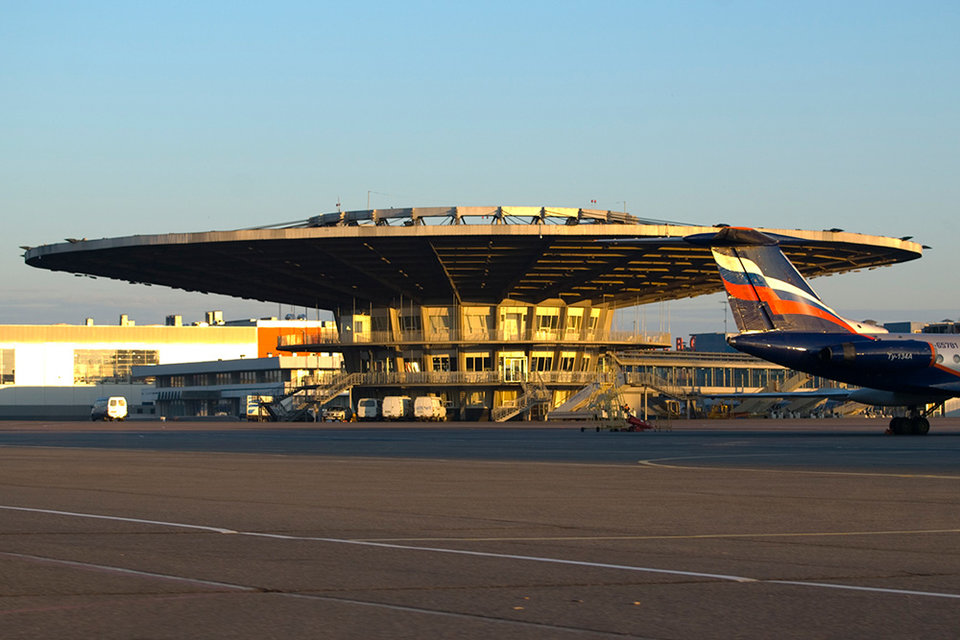
The uniquely designed Sheremtyevo-1 airport complex was built in the 1960s. Image: Flickr / Aleksander Markin
1971-1980
SVO gets a second terminal for the Moscow Olympics
With the increase in travellers, the airport required more capacity and better infrastructure. The early 1970s witnessed the construction of a second runway with Ilyushin Il-62 being the first airliner to land on it.
During the meeting of the International Olympic Committee in October 1974, its general secretary made Moscow the "the home of Summer Olympics”, and to prepare for it, construction of a second terminal was approved by the Ministry of Civil Aviation in early 1976 for which the foundations were laid on 17 November 1977.
1980-1981
Moscow airport welcomes thousands during Olympics
The second terminal, which was under construction to be ready in time for the Olympics, included a passenger station with boarding bridges, an airport square, a hotel, a concourse with technical service, and a number of technical facilities. The complex was designed to serve six million passengers annually, or 2,100 people per hour.
In April 1980, the first flight departed from the second terminal to Havana and the official opening ceremony took place in May that year.
During the summer of 1980, the airport welcomed participants of the Olympic Games to the new international airport complex Sheremetyevo-2. With numerous cafes and duty-free shops, this terminal became the airport’s hallmark. During the month when the Olympics were held, the airport served more than 460,000 international passengers.
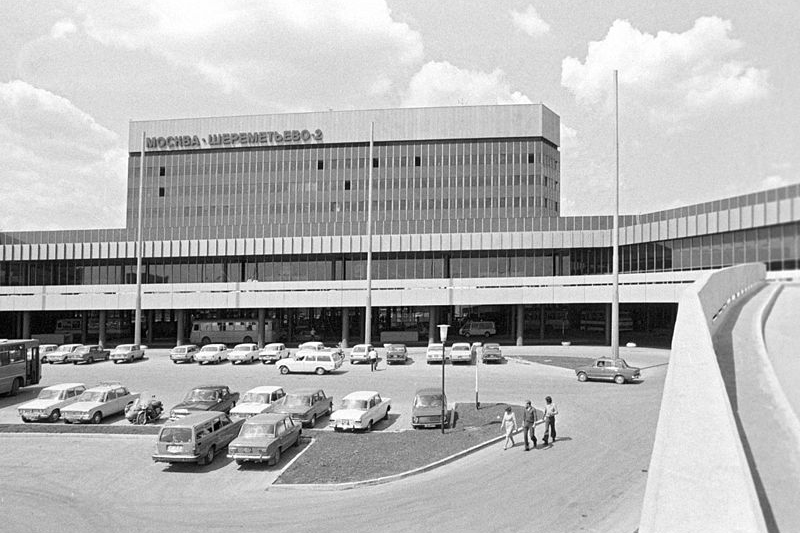
Sheremetevo-2 international airport in 1980 Image: RIA Novosti archive, image #866468 / Vitaliy Arutjunov / CC-BY-SA 3.0
2000-2010
Continued expansion to increase airport capacity at SVO
Following a decade of consistent growth, an increase in flights operating via SVO meant further expansion was necessary by early 2000. After witnessing growing competition from the rapidly expanding Domodedovo International Airport, SVO opened a third terminal on 12 March 2007.
In March 2008, the airport renovated its second runway to receive all types of aircraft, including the Airbus A380 and the Boeing 787 Dreamliner. In addition, a railway line - known as Aeroexpress - was constructed between the airport and Savyolovsky railway station in June 2008, which reduced the travel time between SVO and central Moscow to just 30 minutes.
By April 2010, the airport's capacity reached 35 million passengers per year with two new terminals. In June that year, construction began on a private aviation terminal – Terminal A - which would offer premium services to its estimated 75,000 passengers.
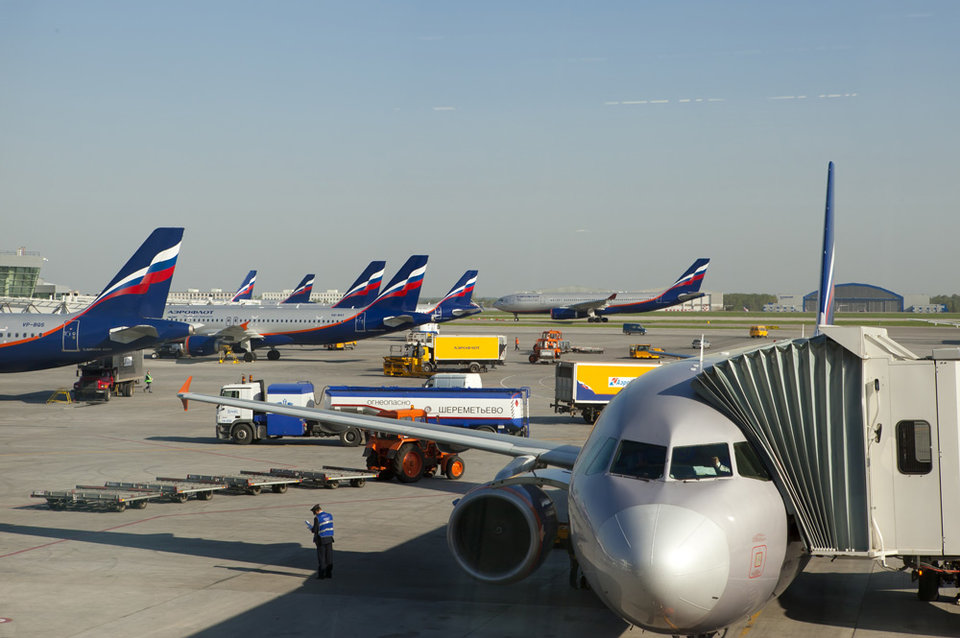
By 2010, SVO’s annual capacity reached 35 million passengers. Image: KKulikov / Shutterstock.com
2011 – 2017
Further growth sees SVO outgrow Domodedovo airport
On 28 March 2011, Vladimir Putin decided to merge the Sheremetyevo and Vnukovo airports into a single complex and build a separate airfield with an independent third runway in SVO.
By the end of 2015, Sheremetyevo surpassed its competitor Domodedovo as Russia's busiest airport, serving more than 31 million passengers, compared to Domodedovo's 30 million. To improve customer experience, SVO launched a mobile app in February 2016.
In 2016, Russian infrastructure funding company TPS Avia committed to investing $840m to upgrade the airport and as a result, secured a 68% stake in SVO.
In 2017, the airport served more than 40 million people which is 17.8% more compared to 2016.
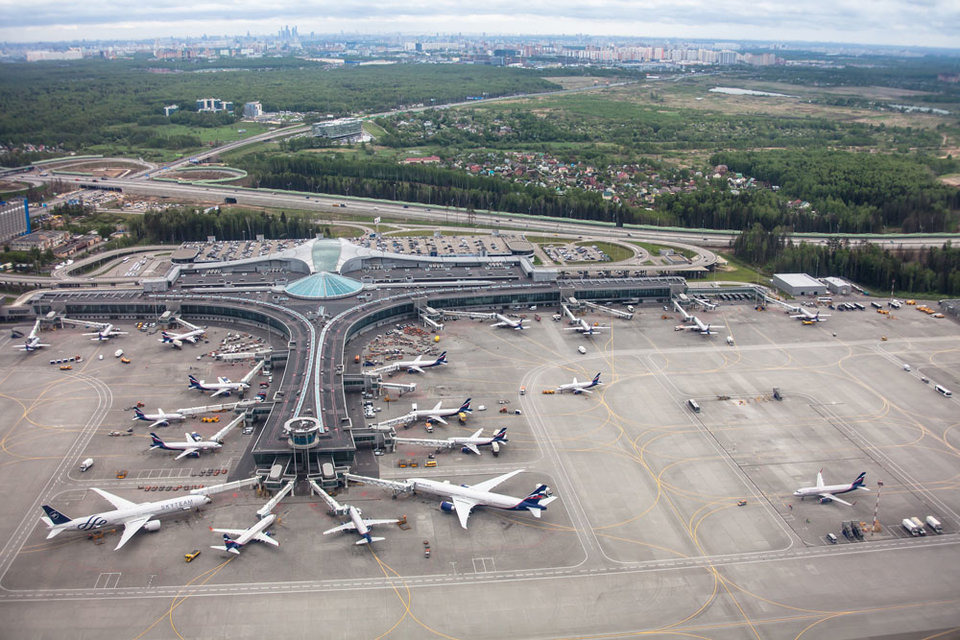
Image: Ranglen / Shutterstock.com
2018
SVO becomes the official airport of the 2018 FIFA World Cup
The 2018 FIFA World Cup opened a new chapter in the history of SVO. A new terminal was put into operation, capable of handling 20 million passengers annually, with facilities such as an inter-terminal crossing with automatic trains that transported passengers between remote terminals.
2018-2019
A change of name for one of the “fastest-growing airports in Europe”
In December 2018, following the results of the Great Names of Russia contest, Sheremetyevo was named after the great Russian poet Alexander Pushkin, becoming Sheremetyevo Alexander S. Pushkin International Airport.
August 2019 not only marked the month where SVO celebrated its 60th anniversary but the airport also ranked second among the fastest-growing airports in Europe, according to Air Transport World magazine.
In September this year, it opened its third runway welcoming Aeroflot’s Airbus A321 as the first flight to touch down.
Earlier In April 2019, SVO began trialling electronic boarding passes on domestic flights as part of the strategy to introduce automation and e-services. In addition, the Russian Federal Security Service began testing an automated passport control system which relies on biometric data and foreign passport recognition to allow Russian passengers to move through border control with fewer movement restrictions.
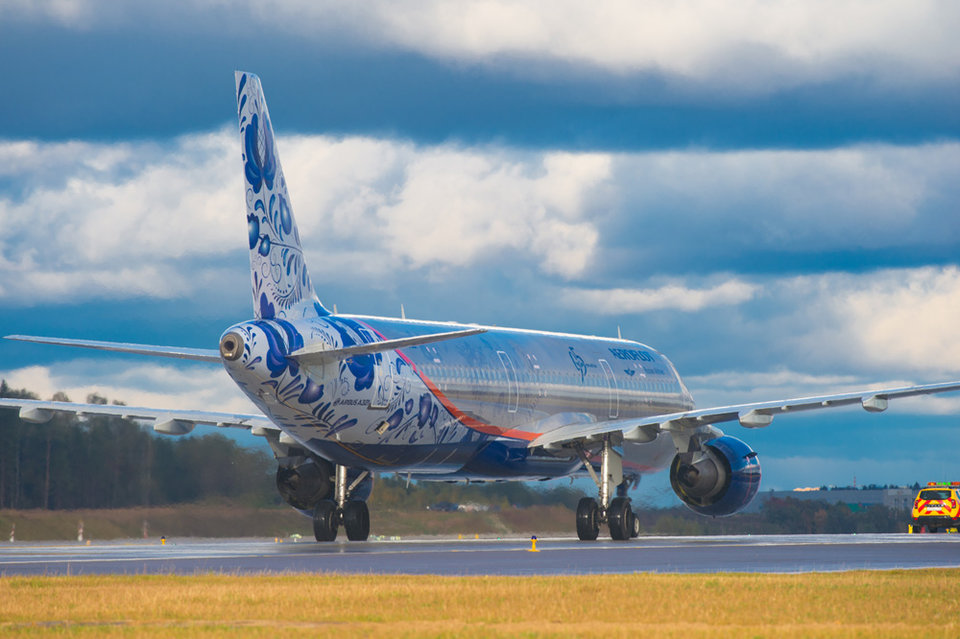
Aeroflot was the first airline to land on SVO’s third runway opened in September 2019. Image: Mikhail Syritsa / Shutterstock.com
2019
Tragedy strikes, forcing authorities to launch new safety protocols
Despite a slew of awards, SVO has been in the headlines this year for reasons other than just achievements. In May 2019, more than 40 passengers died after an Aeroflot plane made an emergency landing and caught fire just after takeoff from the Russian airport.
Following this tragic incident, SVO officials were forced to hold a safety compliance review to assess the airport’s operator. After a further investigation, a video recorded at the time showed fire and smoke from the rear of the aircraft while it was operating on the runway.
More recently, in September this year two aircraft, owned by Aeroflot and Royal Flight respectively, collided when one hit the other while being towed on the runway, causing casualties.